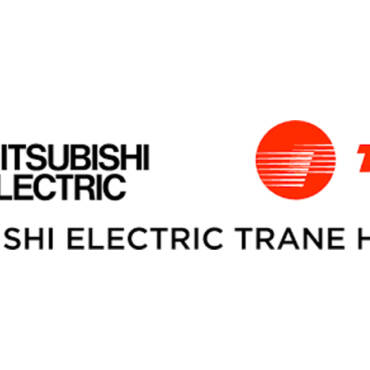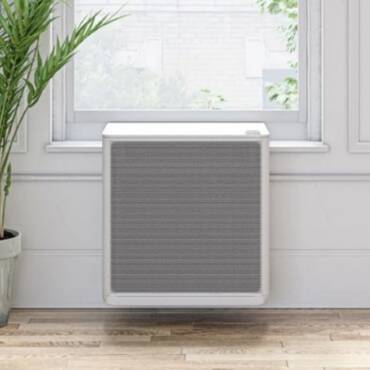Spring is finally here with trees budding and flowers blooming. That also means pollen is abundant and gets everywhere, including in your home, aggravating those who suffer from seasonal allergies. The good news is that there are several ways to help reduce allergens in your home—helping you relieve the uncomfortable symptoms that seasonal allergies bring. We break it down for you below.
3 Ways Your HVAC System Improves Indoor Air Quality
Did you know that your HVAC equipment already has a few benefits in place to help you manage allergen accumulation in your home? Maintaining your current HVAC equipment will ensure that your HVAC system improves your indoor air quality and consistently performs at its peak.
1. Air Filtration
Your HVAC system’s air filter is your best bet to keep allergens and pollutants from causing problems. We recommend that you replace the filter at least once every few months, but you may need to do it more frequently. When you buy a new air filter, check for the MERV rating. Higher numbers, typically 12 or more, are better at filtering out common allergens like pollen. Remember that the more the filter pulls out of the air, the dirtier it gets. Replacing it is a relatively minor investment in your comfort and health.
2. Humidity Management
Your heating and cooling system also work to manage the indoor humidity. In the summer, your air conditioning keeps your home’s humidity at an ideal 30 to 50 percent. Moderate humidity control helps to minimize the growth of mildew or mold, which are also common allergens. In the winter, the air in this region can be significantly drier. You may need to consider adding a humidifier if dry air makes your allergies worse.
3. Ventilation
An added benefit from your HVAC system is whole home ventilation all year round. Ventilation draws fresh air from the outdoors, filters it for particles, and sends it to various parts of the system for conditioning. The process of heating or cooling cycles air through the home, which helps to keep your indoor air cleaner. You may have other forms of ventilation in your home, especially in moisture-prone rooms like the kitchen or bathrooms. It’s important to remember that they work best when you use them regularly. You need to run them daily to get the filtered, fresh air.
Tools to Help You Prevent Indoor Allergens
Your HVAC system is the best first defense against indoor allergies, though sometimes you might need additional help. There are indoor air quality enhancements you can apply to your current HVAC system that can further boost and eliminate allergens from your home.
Air Purifiers
If you are struggling to eliminate allergens from your indoor space, an air purifier is a reasonable addition to your home. Air purifiers come in different sizes and types, so you may need to do a little research based on your allergies. Some models rely on a filter, like a HEPA filter, to pull allergens like dust or pet dander from the air. Other air purifiers use activated carbon, which is better at removing gases and odors but may not be as effective at picking up particles. In either case, you will need to run the system regularly and change the filters. There are also whole home options that connect to your HVAC system for seamless operation. Our home comfort advisors can help identify the best solution for your home.
Humidifiers
Humidity can be a double-edged sword in the fight against indoor allergies. Dry air irritates your eyes, throat and sinuses, which can make allergic reactions worse. Humidifiers can be a useful tool, but you should use them wisely. Humidifiers work by adding moisture to the indoor air, which prevents your nose and throat from drying out. Too much moisture, on the other hand, can promote growth of mildew or mold. Sometimes problems arise from the humidifier itself, particularly if it is not cleaned before each use. A whole-house humidifier may be an appropriate solution, as it can sense your home’s humidity and add moisture to the right level.
UV Lights
If the air quality inside your home is not the best, there are a few options to consider. One of these is the power of light. Modern UV lamps, which mimic natural sunlight, can kill off bacteria, fungi and viruses in your house. UV light systems can be added to existing HVAC systems for a whole house solution.
Houseplants Can Improve the Air in Your Home
Believe it or not, some plants can actually help people with allergens rather than induce them. In addition to absorbing carbon dioxide and returning oxygen to the air, there are plants that can also absorb common indoor pollutants or allergens. This provides yet another option to improve your indoor air quality. The best choices include:
- Aloe Vera – This easy-to-grow and hardy succulent prefers a sunny spot in the home. Known for its medicinal value to soothe and heal burns and wounds, it also cleans the air of harmful chemical fumes from paint and household cleaners.
- Boston Fern – A popular houseplant that acts as a natural humidifier and can also help to eliminate traces of harmful chemical fumes from paint and household cleaners.
- Ficus or Weeping Fig – This is a sensitive plant that likes bright indirect or filtered light. It can remove harmful chemical fumes from paint and household cleaners.
- Golden Pothos – Not so green thumbs will like this easy to care for vining tropical plant that clears the air of harmful chemical fumes from paint and household cleaners.
- Janet Craig Dracaena – Don’t have a sunny space? No problem for this plant that is able to grow in low light locations. It can remove harmful chemical fumes from paint, household cleaners, and solvents.
- Spider Plant – Commonly found houseplant that grows quickly and easily and can help reduce mold and allergens. Absorbs harmful chemical fumes from paint, household cleaners, and solvents from the air and can remove particulate matter such as ash from a fireplace.
Remember that some houseplants can be toxic to pets or children. It’s wise to research the best uses and placement before you make a purchase.
In summary, it’s never too late to adjust your HVAC system so that it helps you avoid the worst of seasonal allergy symptoms. Contact Sila today to learn more about the multitude of options to improve indoor air quality in your home.
Additional Resources
Whether you require installation, repair, or maintenance, our technicians will assist you with top-quality service at any time of the day or night. Take comfort in knowing your indoor air quality is the best it can be with MOE heating & cooling services Ontario's solution for heating, air conditioning, and ventilation that’s cooler than the rest.
Contact us to schedule a visit. Our qualified team of technicians, are always ready to help you and guide you for heating and cooling issues. Weather you want to replace an old furnace or install a brand new air conditioner, we are here to help you. Our main office is at Kitchener but we can service most of Ontario's cities
Source link




Add Comment